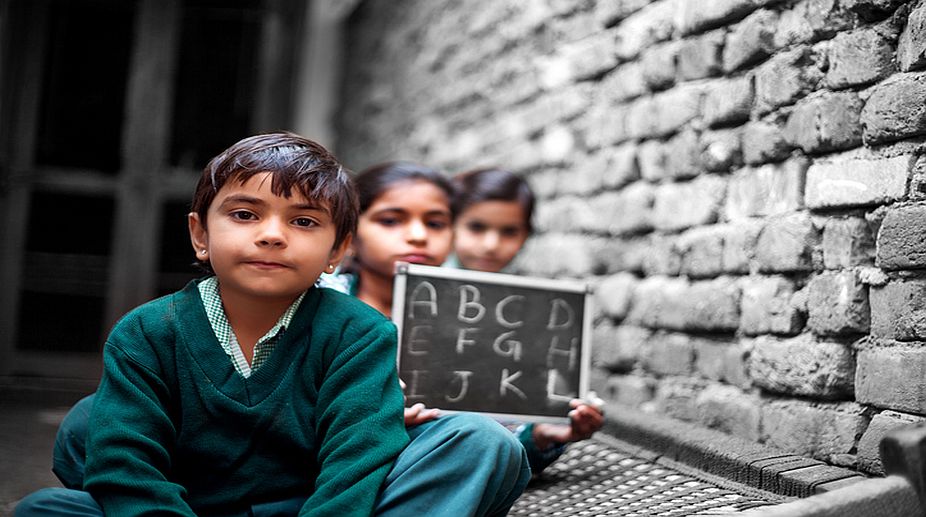The educational system in the country has undergone many changes since the time we were enrolled as students over sixty five years back. Although the old format has more or less been restored after a few experiments, many new fields have been added and new methods of teaching through use of electronic equipment has been introduced.
What seems to have also changed are the teachers. Teachers are better dressed, better paid, far more friendly and ready to help both the dim and the bright by providing additional instructions – of course, in groups and at their own place and price! However, being debarred from using the cane and constantly reminded of the intricate nature of child psychology they look like pale shadows of our powerful preceptors who never failed to correct in order to be correct, who brooked no interference in the way they handled their wards and who did not believe learning was possible for laggards without being lashed or for the witted without being held on leash.
How were they? And how did they teach? In our time, oral instruction was the sole method for imparting knowledge. It was supplemented by the innocuous blackboard, chalk and duster. It would, however, be a mistake to assume that the limited aids available in our time acted as a constraint to the pedagogic exercise of our teachers for they had two others – the cane stick and their own power-packed hands – which established at every step that nothing more was required! Indeed, they distinguished themselves from each other by the way they employed those aids.
Such a distinguished one was Rajen Babu (Pal). He would call each boy in turn and ask him questions on the day’s subject. A wrong answer or no answer would be followed by a call to the boy to come over. As the boy moved closer, covering his head and face with his hands, Rajen Babu would unfailingly find a gap in his defence and deliver smart slaps. through it. For he could use both hands equally well and baffle his target with feints.
Prabhat Babu was another who could administer effective punishment without using the cane. His preference was for our ears and the variety of twitching that he invented was known as the “samosa treatment”. In this, he would fold one’s ear multiple times and hold it in that state while the boy would be asked to read from his book the lesson he had not learnt. By the time we had our next class with him, our foolish ears would regain their old elevation and be ready for the next “treatment”. Standing on the bench, doing sit-ups and kneeling down on the floor with one’s ears held by oneself were some of the other punishments awarded to us. There was no problem with the first two provided one could rise above such petty sentiments as prestige and honour! The third was slightly painful for the knees and required greater mental detachment from the world around since it had to be undergone in the corridor in full view of the whole school. It, however, had the advantage that the punished could talk to each other and even exchange pleasantries.
A dreadful variation, introduced by Rajen Babu (Sarkar), was standing on one foot with the proviso that a fall would invite caning. An exclusive bench was kept at the back of the class for undergoing this punishment from which nobody could come out unscathed.
Pandit Mosai was another who saw only darkness in our future but instead of using the cane to lighten the gloom ahead of us chose the duster which, according to him, was invented both to wipe the black boards and to reactivate blocked brains! “Murkhyasya latthoushadhi, kashtyausadhi ba” (the medicine for the ignorant is the stick or the piece of wood), he would quote the sloka – duly modified – in order to justify the punishment. The application of the duster for what he called “potato cultivation” involved drawing our heads by the hair and hitting with the wooden back. The places so struck would swell into small balls metaphorically described by him as potatoes! For the dullest, however, he issued a standing threat to break their skulls one day and to put those in their hands for taking back home.
Lest it is assumed that canes did not find sufficient use with our teachers, let me confirm that those were the principal means to herd us on the right path and to transmit knowledge. Canes usually came in two shapes: the long and thin and the short and thick. Buddhiswar Da who was the custodian of the sticks once explained to us that the thin ones left a burning sensation on the skin while the thick ones gave the feeling of stinging by a scorpion. Our backs and bare legs were the two favoured places for application of this instrument even as some preferred our proffered palms for a more immediate effect!
Two things baffle me as I remember my teachers and recall the punishments. How could they still remain in mind as my most treasured memories and my heart well up in respect for the perpetrators? And why did our parents accept the punishments given to us without demur? Did the mystery lie in the unquestionable commitment of our teachers to our welfare and in the unshakable trust that our parents had in them?











